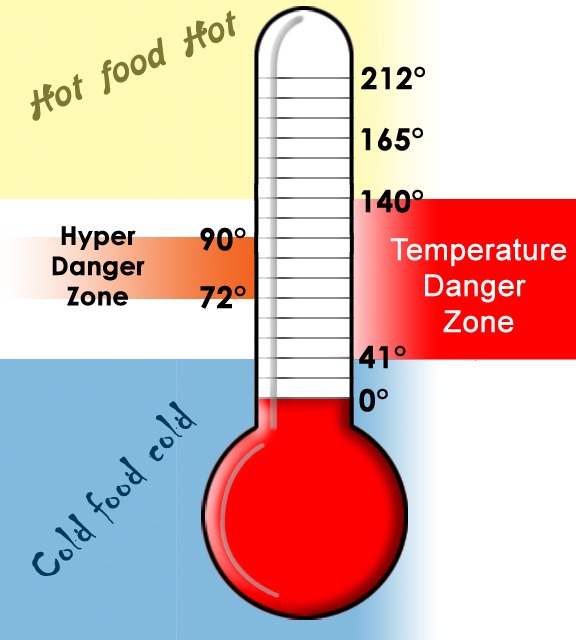At what temperature is a fever dangerous. Fever in Children: Understanding Symptoms, Causes, and Treatment Options
What temperature is considered a fever in children. How can parents identify fever symptoms. When should parents seek medical attention for a child’s fever. What are safe and effective ways to manage fever in children at home. How do different types of thermometers affect temperature readings in kids. Why do fevers occur and what purpose do they serve.
What Defines a Fever in Children?
A fever is generally defined as a body temperature of 100.4°F (38°C) or higher. However, the specific temperature that indicates a fever can vary depending on the method used to measure it. Different parts of the body naturally have slightly different temperatures, so the threshold for fever differs based on where the temperature is taken.
- Rectal, ear, or forehead (temporal artery): 100.4°F (38°C) or higher
- Oral (mouth): 100°F (37.8°C) or higher
- Axillary (armpit): 99°F (37.2°C) or higher
It’s important to note that these are general guidelines, and individual healthcare providers may have slightly different criteria for defining a fever in children.
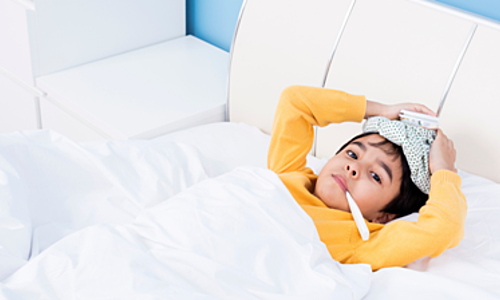
Common Causes of Fever in Children
Fevers in children are most often caused by infections. The elevated body temperature serves a purpose in fighting off the invading pathogens. Here are some common causes of fever in kids:
- Viral infections (e.g., common cold, flu)
- Bacterial infections (e.g., strep throat, urinary tract infections)
- Immunizations (as a normal immune response)
- Overdressing (especially in infants)
- Teething (may cause a slight temperature rise, but rarely above 100°F)
Understanding the underlying cause of a fever can help parents determine the appropriate course of action and whether medical attention is necessary.
Recognizing Fever Symptoms in Children
Identifying a fever in children goes beyond simply feeling their forehead. While a warm sensation can be an indicator, there are several other signs and symptoms to watch for:
- Flushed or red skin
- Increased heart rate and breathing
- Lethargy or changes in behavior
- Loss of appetite
- Sweating or chills
- Headache or body aches
- Dehydration
Is it possible for a child to have a fever without feeling hot to the touch? Yes, in some cases, especially if the child has been given fever-reducing medication or is experiencing the chills phase of the fever cycle. This is why using a thermometer for accurate measurement is crucial.
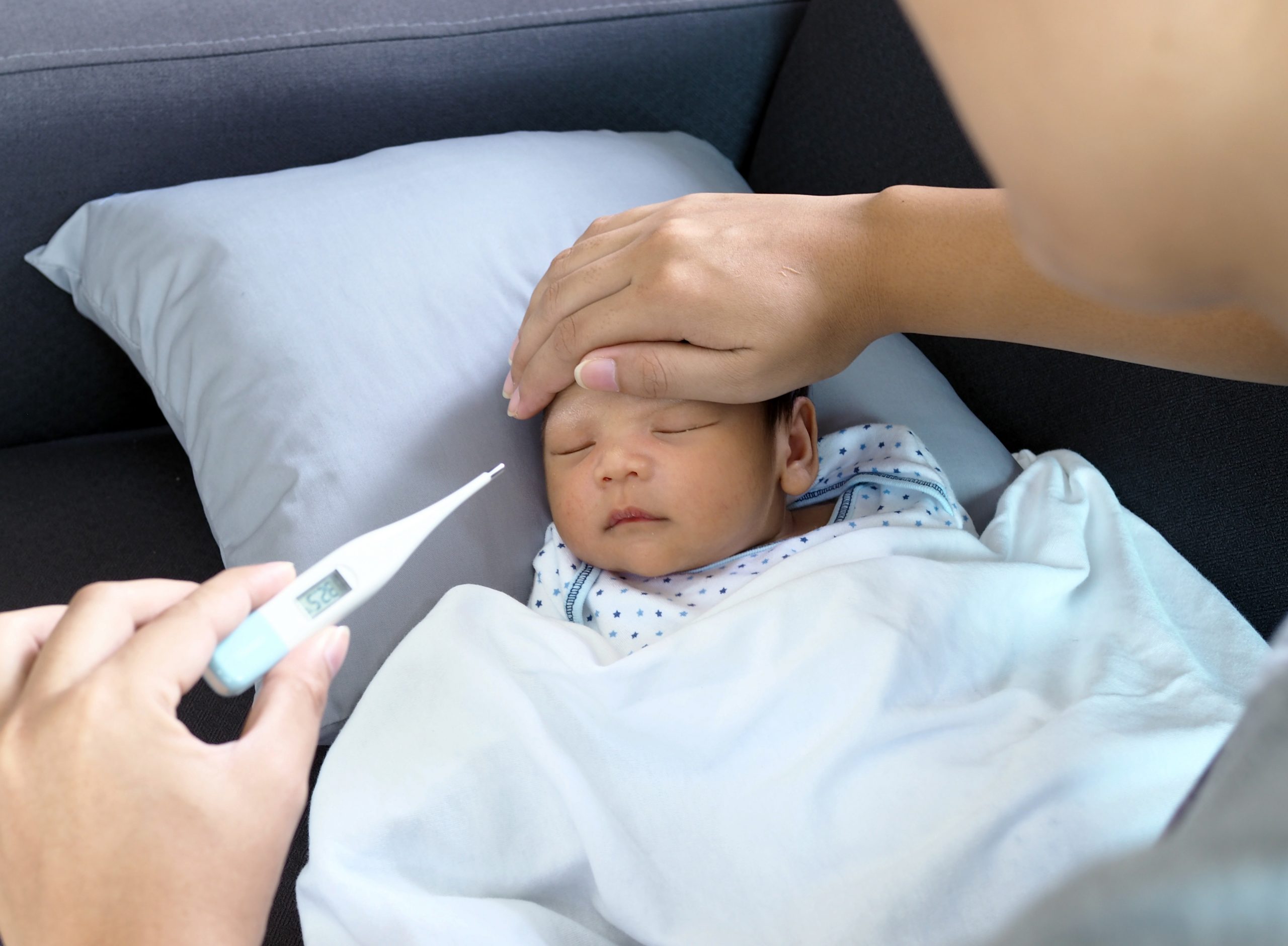
When to Seek Medical Attention for a Child’s Fever
While most fevers in children are not cause for serious concern, there are situations where prompt medical attention is necessary. Parents should be aware of the following guidelines:
Age-Based Guidelines:
- Infants under 3 months: Seek immediate medical care for any fever of 100.4°F (38°C) or higher
- 3-6 months: Contact a doctor for temperatures above 102°F (38.9°C)
- 6-24 months: Consult a doctor if the fever persists for more than 24 hours
- 2 years and older: Seek medical attention if the fever lasts more than 3 days or is accompanied by concerning symptoms
Other Warning Signs:
- Severe headache or neck stiffness
- Difficulty breathing or chest pain
- Severe abdominal pain
- Unusual skin rash
- Signs of dehydration (dry mouth, sunken eyes, decreased urination)
- Seizures or convulsions
- Extreme lethargy or unresponsiveness
How can parents differentiate between a fever that requires immediate medical attention and one that can be managed at home? Consider the child’s overall behavior and symptoms in addition to their temperature. A child who is alert, drinking fluids, and responsive may not need immediate medical care even with a high fever, while a child with a lower temperature but showing signs of severe illness should be evaluated promptly.
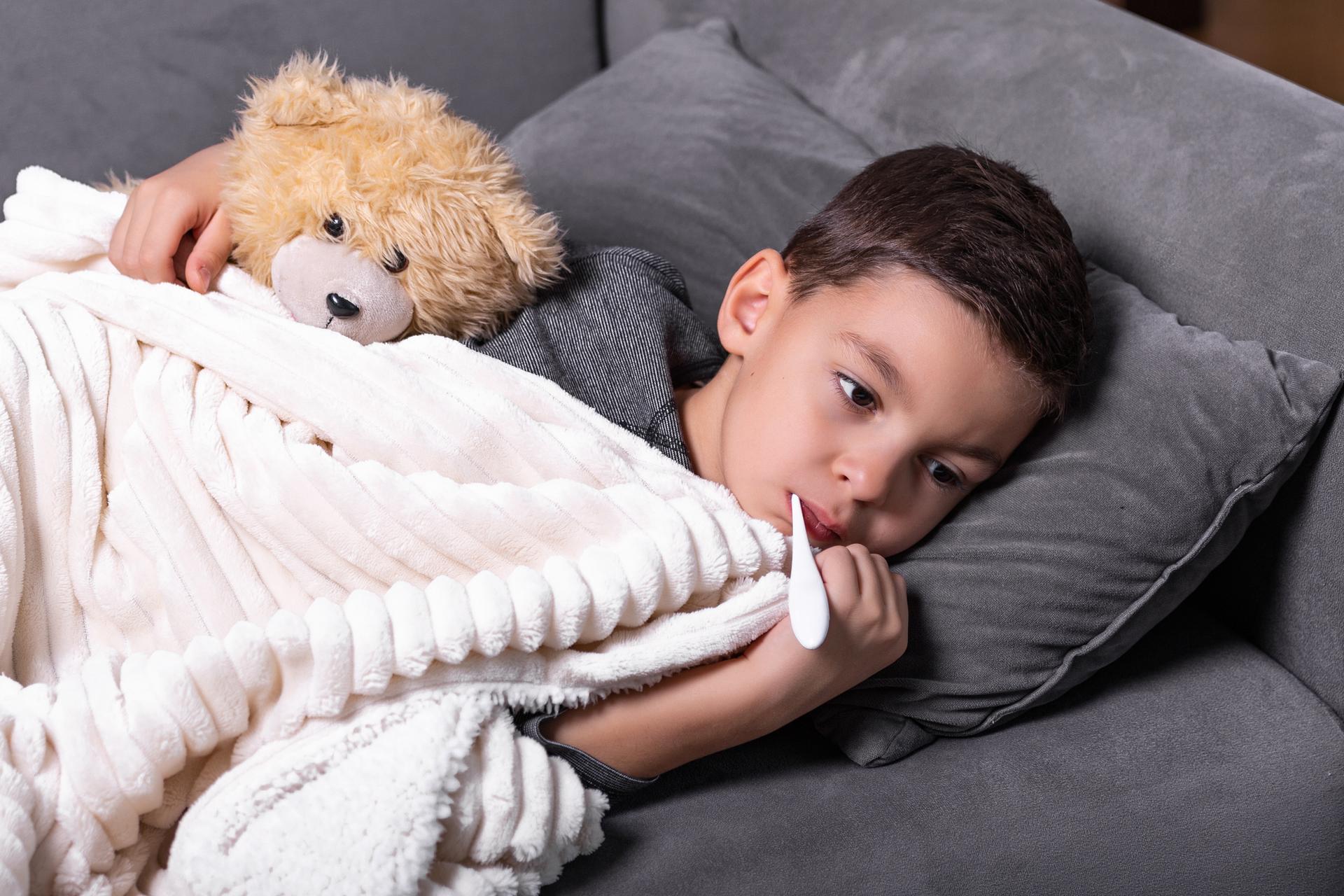
Safe and Effective Home Management of Fever in Children
When a child has a fever that doesn’t require immediate medical attention, there are several ways to manage it at home:
- Keep the child hydrated with plenty of fluids
- Ensure the child gets plenty of rest
- Dress the child in lightweight, breathable clothing
- Maintain a comfortable room temperature (not too hot or cold)
- Use a lukewarm compress on the forehead, wrists, or back of the neck
- Administer over-the-counter fever reducers if necessary (following age-appropriate dosing guidelines)
Should parents try to break a fever by making their child sweat it out? No, this is an outdated and potentially dangerous approach. Overheating a feverish child can lead to dehydration and discomfort. Instead, focus on keeping the child comfortable and well-hydrated.
The Role of Fever-Reducing Medications
Over-the-counter medications can be effective in reducing fever and alleviating discomfort in children. The two main options are:
- Acetaminophen (e.g., Tylenol)
- Ibuprofen (e.g., Advil, Motrin) – not recommended for infants under 6 months
When administering these medications, it’s crucial to follow the recommended dosage based on the child’s age and weight. Overdosing can lead to serious health complications.
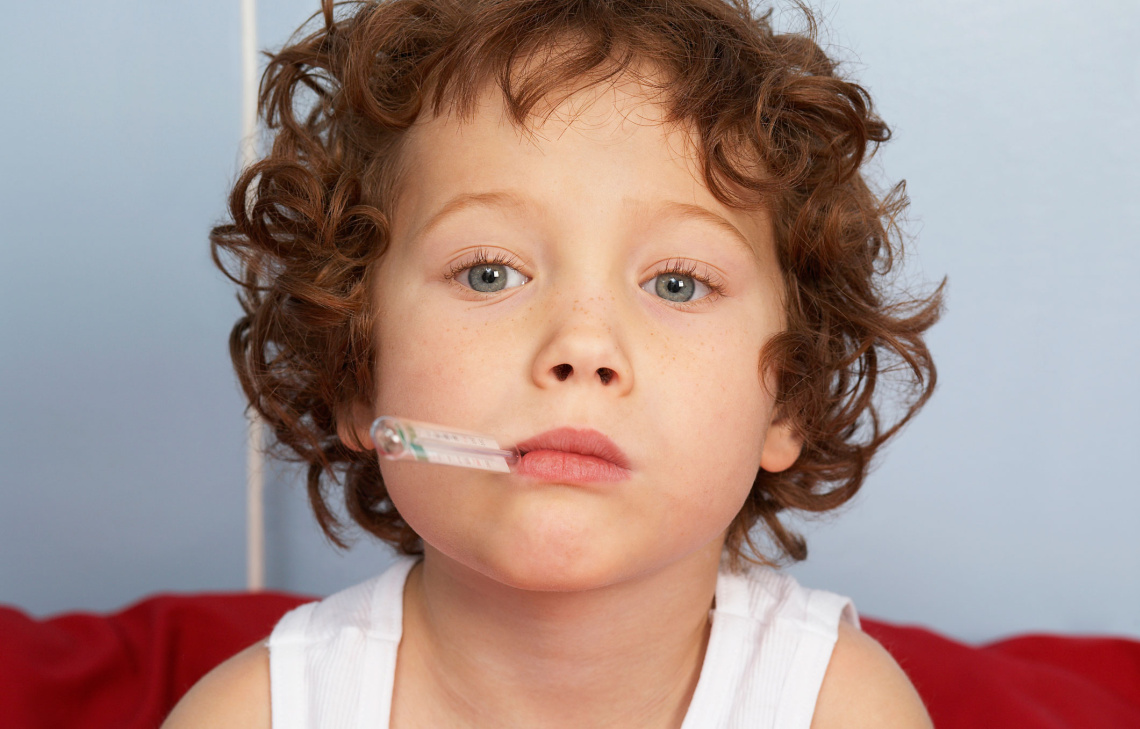
Is it safe to alternate between acetaminophen and ibuprofen for persistent fevers? While this practice is sometimes recommended by healthcare providers, it should only be done under medical guidance to avoid potential dosing errors or medication interactions.
Important Medication Precautions:
- Never give aspirin to children or teenagers due to the risk of Reye’s syndrome
- Avoid combination cold and flu medications that may contain fever reducers
- Always use the measuring device provided with the medication for accurate dosing
- Keep a log of medication times and doses to prevent accidental overdosing
Understanding the Purpose of Fever in the Body
While fevers can be concerning for parents, it’s important to understand that fever itself is not an illness, but rather a symptom and a natural defense mechanism of the body. Fever serves several important functions:
- Activates and enhances the immune system
- Creates an inhospitable environment for pathogens
- Slows down bacterial and viral replication
- Increases production of white blood cells and antibodies
Does this mean parents should avoid treating low-grade fevers? Not necessarily. While allowing a mild fever to run its course can be beneficial, treating the fever can help alleviate discomfort and improve the child’s ability to rest and stay hydrated. The decision to treat should be based on the child’s overall condition rather than the temperature alone.

The Impact of Different Thermometer Types on Temperature Readings
Accurate temperature measurement is crucial for assessing fever in children. Different types of thermometers can yield varying results:
- Digital rectal thermometers: Most accurate for infants and young children
- Oral digital thermometers: Suitable for older children who can cooperate
- Tympanic (ear) thermometers: Quick and easy, but can be less accurate if not used correctly
- Temporal artery (forehead) thermometers: Non-invasive and generally accurate
- Axillary (armpit) thermometers: Less accurate but can be used for initial screening
How much can temperature readings vary between different thermometer types? Readings can differ by up to 1°F (0.5°C) depending on the method used. This is why it’s important to use consistent methods when tracking a child’s fever over time.
Best Practices for Temperature Taking:
- Use the same type of thermometer and method for consistent readings
- Follow the manufacturer’s instructions carefully
- Clean the thermometer thoroughly between uses
- Wait at least 15 minutes after the child has had hot or cold foods/drinks before taking an oral temperature
- For rectal temperatures, use a dedicated thermometer marked for rectal use only
By understanding the nuances of different thermometer types, parents can ensure more accurate fever assessment and better inform their decisions regarding their child’s health care.

Fever (High Temperature) In Kids (for Parents)
All kids get a fever from time to time. Usually, a fever isn’t dangerous or bad for kids. It can even be a good thing because it can help the immune system fight infection.
Still, parents might be unsure about how to handle a fever at home and when to call the doctor. Here are some tips.
What Is a Fever?
In general, a fever means the body’s temperature is 100.4°F (38°C) or higher. Different ways of measuring a temperature — rectal, armpit, ear, forehead, mouth — get a slightly different number, so the number that means a child has a fever is a little different too.
What Causes Fevers?
Fevers in kids are usually caused by an infection. A fever helps the body by stimulating the immune system to fight the infection. Doctors also think the higher temperature makes it harder for the germs to grow.
A few other reasons kids can have a fever:
Overdressing: Infants, especially newborns, may get fevers if they’re overdressed, wrapped in a blanket, or in a hot environment because they don’t regulate their body temperature as well as older kids. But because fevers in newborns can be a sign of a serious infection, even infants who are overdressed must be checked by a doctor if they have a fever.
But because fevers in newborns can be a sign of a serious infection, even infants who are overdressed must be checked by a doctor if they have a fever.
Immunizations: Babies and kids sometimes get a mild fever that lasts about a day after getting vaccinated.
A child who is teething might have a slight rise in body temperature, but it’s probably not the cause if the temperature is higher than 100°F (37.8°C).
When Is a Fever a Sign of Something Serious?
In most healthy kids who are acting well, a fever isn’t serious.
But a fever can be serious for:
- Infants younger than 3 months: If an infant younger than 3 months has a rectal temperature of 100.4°F (38°C) or higher, call your doctor or go to the emergency department right away.
- Kids with some health conditions: If your child has an ongoing health issue, make sure you know if the doctor should be called for fever.
A fever is probably not serious if your child is 3 months or older and:
- is still interested in playing
- is drinking well
- is alert and smiling
- has a normal skin color
- looks well when their temperature comes down
Don’t worry too much about a child with a fever who doesn’t want to eat. This is common with infections that cause fever. For kids who still drink and urinate (pee) normally, not eating as much as usual is OK.
This is common with infections that cause fever. For kids who still drink and urinate (pee) normally, not eating as much as usual is OK.
What Are the Signs of a Fever?
Kids with a fever might:
- feel warm
- act differently (they might be fussy or cranky, or quieter than usual)
- breathe a little faster or have a faster heart rate than normal
- have a headache
- have chills or sweating
- have red or flushed skin
For any of these signs, take your child’s temperature to know if they really have a fever.
If your child feels warm or is acting unwell, use a digital thermometer to confirm a fever. Different ways of taking the temperature are more accurate than others at measuring the true body temperature.
The best way to take a temperature:
- for kids 3 years old and younger: a rectal temperature
- for kids 4 or older who can cooperate: an oral temperature (by mouth)
- for any age: under the armpit (axillary) and temporal artery (forehead) are easiest but less accurate.
 Tympanic (in the ear) is OK for kids 6 months and older.
Tympanic (in the ear) is OK for kids 6 months and older.
It’s a fever when a child’s temperature is at or above one of these levels:
- rectal (in the bottom), tympanic (in the ear), or temporal artery (across the forehead): 100.4°F (38°C)
- oral (in the mouth): 100°F (37.8°C)
- axillary (under the arm): 99°F (37.2°C)
How Can I Help My Child Feel Better?
No treatment is needed if a child is still playing and drinking normally and doesn’t have pain.
Treating a fever with medicine isn’t needed if a child is still playing and drinking normally and doesn’t have pain. Give medicine only when a fever causes a child discomfort or keeps them from drinking.
While kids have a fever, keep an eye on them, help them to rest, and keep offering fluids to drink. They need to drink a little extra to make up for the fluids they lose from sweating.
Home Care Measures
Medicines
If your child is uncomfortable from a fever or not drinking fluids well, you can give one of these medicines:
- acetaminophen (such as Tylenol or a store brand)
or - ibuprofen (such as Advil, Motrin, or a store brand).
 Do not give to children under 6 months old.
Do not give to children under 6 months old.
Follow the package directions for how much to give and how often. If you don’t know the recommended dose or your child is younger than 2 years old, call the doctor to find out what to use and how much to give.
- If your child has any medical problems, check with the doctor to see which medicine to use.
- Unless instructed to by a doctor, never give aspirin to a child. Such use is linked to Reye syndrome, a rare but serious illness.
Do not give any medicine for fever to infants younger than 3 months old unless instructed to by a doctor.
Staying Comfortable
If your child has a fever:
- Have them wear lightweight clothing and stay covered with a light sheet or blanket. Heavy clothes and blankets can keep the body from cooling, which can make your child uncomfortable.
- Keep the room at a comfortable temperature — not too hot or too cold.

- Make sure they get plenty of rest. Staying in bed all day isn’t necessary, but a sick child should take it easy.
- They should stay home from school or childcare until their temperature has been normal for 24 hours.
Lukewarm sponge baths to lower a fever generally are not recommended. In fact, sponge baths can make kids uncomfortable from shivering. Never use rubbing alcohol (it can cause poisoning when absorbed through the skin) or ice packs/cold baths (they can cause chills that can raise body temperature).
Food and Drinks
Offer plenty of fluids to avoid dehydration because fevers make kids lose fluids faster than usual. Oral rehydration solutions (like Pedialyle, Enfalyte, or store brands) are a good choice. You also can give water, soup, ice pops, and flavored gelatin. Avoid drinks with caffeine, including colas and tea, which can make dehydration worse by making kids pee more often.
Let kids eat what they want (in reasonable amounts), but don’t force it if they don’t feel like eating much.
When Should I Call the Doctor?
The temperature that should trigger a call to the doctor depends on a child’s age, the illness, and whether they have other symptoms. You might ask if your doctor has specific guidelines on when to call about a fever.
In general, call the doctor if your child is:
- younger than 3 months old with a rectal temperature of 100.4°F (38°C) or higher
- 3 months or older with a temperature higher than 102.2°F (39°C)
- any age but has a health problem like cancer or sickle cell disease and has a fever
Also call if a child 3 months or older has a fever and:
- refuses fluids or seems too ill to drink enough
- has lasting diarrhea or repeated vomiting
- has any signs of dehydration (peeing less than usual, not having tears when crying, less alert and less active than usual)
- has a specific complaint (like a sore throat or earache)
- still has a fever after 2–3 days
- has a rash
- has pain while peeing
Get emergency care if your child shows any of these signs:
- crying that won’t stop
- extreme irritability or fussiness
- sluggishness and trouble waking up
- a rash or purple spots that look like bruises on the skin (that were not there before your child got sick)
- blue lips, tongue, or nails
- in an infant, the soft spot on the head seems to be bulging out or sunken in
- stiff neck
- severe headache
- limpness or refusal to move
- trouble breathing that doesn’t get better when the nose is cleared
- leaning forward and drooling
- seizure
- moderate to severe belly pain
What Else Should I Know?
All kids get fevers, and in most cases they’re back to normal within a few days. For older babies and kids, the way they act can be more important than the reading on your thermometer. Everyone gets a little cranky when they have a fever. This is normal and should be expected.
For older babies and kids, the way they act can be more important than the reading on your thermometer. Everyone gets a little cranky when they have a fever. This is normal and should be expected.
But if you’re ever in doubt about what to do or what a fever might mean, or if your child is acting ill in a way that concerns you even with no fever, always call your doctor for advice.
Medically reviewed by: Melanie L. Pitone, MD
Date reviewed: November 2022
Fever & Temperature In Adults: When To Worry
Karen Justiniano, DO, MS, Stamford Health Medical Group
Looking for a Primary Care Physician (PCP)?
Let us help you find the right doctor for your needs.
Explore Your Options
A friend of mine whose father is 70 years old told me her story. It went something like this:
“My father never gets fevers. Out of nowhere the other day, he developed a 103 temperature with no other symptoms. He is also fully vaccinated against COVID-19. My mother brought him to the emergency room. Did she do the right thing, or would he likely have been fine if he stayed home and let the fever run its course?”
My mother brought him to the emergency room. Did she do the right thing, or would he likely have been fine if he stayed home and let the fever run its course?”
As a physician who cares for a variety of people with a variety of conditions, I have to say of course she did the right thing! When in doubt or when concerned, seeking medical attention is the smart thing to do.
But the longer answer is a little more complicated than that. It all starts with breaking down the purpose of a fever, and when you should truly worry. Please note—fevers in infants or young children are sometimes a different story—what you are about to read relates to adults only.
What is a fever and why do we get them, and sometimes with no other symptoms?
Fever is an elevated body temperature which means your temperature is 100.4 degree F or higher. A fever is the body’s way of fighting an infection by naturally raising your body’s temperature to “kill the germ.” The medical community likes to say that fever is a “good thing,” in most cases.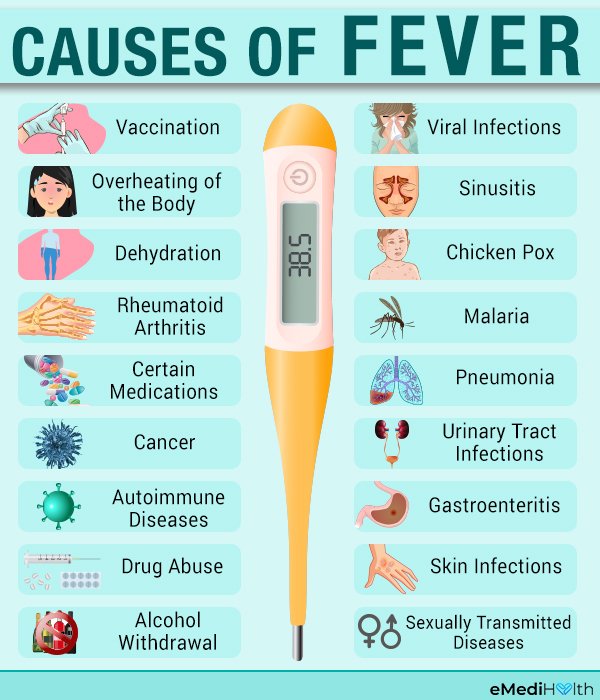
And yes, it’s completely possible for adults to develop a fever with no other symptoms, and for doctors to never truly find the cause. Viral Infections can commonly cause fevers, and such infections include COVID-19, cold or the flu, airway infection like bronchitis, or the classic stomach bug.
That’s why you often hear the word “viral” as an explanation because these types of infections often go away on their own after a few days.
What is considered a high fever in adults?
A high-grade fever in adults is 103 degrees F or higher.
Is it possible that a fever could be a sign of a “breakthrough case” of COVID-19 even if the person is fully vaccinated?
Yes, but not highly likely. Breakthrough cases of COVID-19 in fully vaccinated people have been reported, but symptoms tend to be milder than in non-vaccinated people, including fever.
First, make sure you are taking your temperature the right way. Taking your temperature by mouth is the most accurate method, and wait at least 30 minutes after you eat or drink anything hot or cold. Get medical attention for your fever if:
Get medical attention for your fever if:
- Your temperature is high and has not gone down after taking Tylenol or Advil
- Your temperature lasts several days or keeps coming back
- You live in an area where people have COVID-19
- You have serious health conditions like diabetes, heart disease, cancer, lupus, or sickle cell anemia. (Non-infections like these can cause fever as well.)
You should also seek medial attention if you have a fever and you:
- Are pregnant
- Recently returned from travel overseas
- Get infections often
- Are on chemotherapy, in which case you should seek medical attention immediately if the fever lasts for more than one hour.
- Have recently been bitten by a tick
Is 98.6 still considered “normal” body temperature?
Yes and no. You’ve probably always heard that the average body temperature is 98.6, but the truth is there’s a much wider range—from about 97 to 99 degrees F.:max_bytes(150000):strip_icc()/fever-as-a-symptom-of-cancer-514434_final-7e069dd7ce444357b3536d0897e16b00.jpg)
So why is 98.6 suddenly a myth after all these centuries? Research suggests body temperatures are falling overall. Doctors have a few ideas about why this is, including lower metabolic rates, lower rates of infection and more advanced thermometers.
A couple of helpful reminders:
- As the saying goes, “Don’t fear the fever.” A fever is your body’s first line of defense in fighting off an infection.
- If you are not fully vaccinated against COVID-19, and have developed a high-grade fever, please call your doctor right away.
what to do, what temperature is considered high and why it is dangerous, causes and symptoms
Fever, fever – this is what we call an increase in body temperature. This is the most important defense mechanism of the human body and one of the main symptoms of infection. Most often, we encounter a fever with colds and flu. High temperatures cause some discomfort, but it helps to cope with the disease faster. We will tell you why adults have a fever, when it is necessary to bring down the temperature, and in what cases it is not worth it.
We will tell you why adults have a fever, when it is necessary to bring down the temperature, and in what cases it is not worth it.
Why the temperature rises
1
Body temperature can rise for various reasons: due to overheating, inflammation, hormonal imbalance. The processes of heat transfer in the human body are regulated by a small part of the brain – the hypothalamus. The temperature rises with any physical or chemical impact on it.
An increase in body temperature associated mainly with infections is called a fever. It develops when biologically active substances, cytokines, act on the hypothalamus. The immune system releases them into the blood in response to the inflammatory process. The production of cytokines is also enhanced by the waste products of microbes.
Fever is one of the main symptoms of an acute respiratory viral infection (ARVI). But it is also a protective reaction of the body, aimed at fighting the virus. When the temperature rises, the immune system synthesizes more leukocytes, which destroy or inactivate pathogenic microbes, and interferons, natural antiviral substances.
When the temperature rises, the immune system synthesizes more leukocytes, which destroy or inactivate pathogenic microbes, and interferons, natural antiviral substances.
What temperature is considered high
2.3
A temperature above 37˚C measured in the armpit is considered elevated. When measuring temperature in the oral cavity, a temperature of more than 37.2˚C is considered elevated, and in the rectum – more than 37.8˚C.
Types of fever:
● Subfebrile – 37.5–38˚C. Accompanies a chronic or easily flowing acute infection.
● Febrile – 38-39˚C. A frequent companion of most acute inflammatory processes – infectious and non-infectious.
● Pyretic (high) – 39-41˚C. This is one of the signs of a moderate flu. High fever is accompanied by symptoms that worsen well-being.
● Hyperpyretic (critically high) – more than 41˚C. It occurs in a severe form of influenza, causes life-threatening disorders of body functions.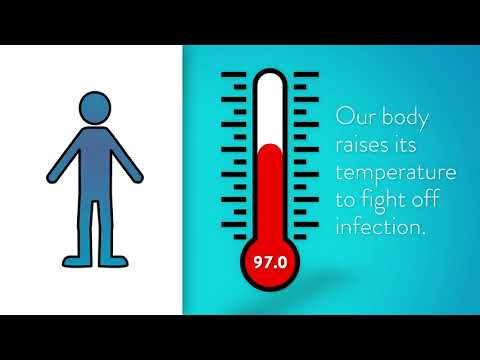
What symptoms accompany fever
4, 5
Subfebrile temperature is accompanied by weakness, feeling of weakness, headache, drowsiness, chills. At a temperature of 38˚C, the skin becomes hot, the cheeks turn red, the patient feels intense heat, dry mouth. Lips dry out and crack. With pyretic fever, nausea and vomiting may join. Hyperpyretic temperature is often accompanied by a disorder of consciousness, delirium.
Fever increases blood pressure and heart rate. An increase in temperature by one degree increases the pulse by 10-15 beats per minute.
What diseases occur with fever
6
The most common cause of fever in adults is acute respiratory viral infections (ARVI):
● Coronavirus, rhinovirus infection. This is SARS, affecting mainly the mucous membranes of the nasal cavity and pharynx. Symptoms: runny nose, redness and sore throat, sneezing, coughing. The temperature is subfebrile (37–38˚С) or febrile (38–39C).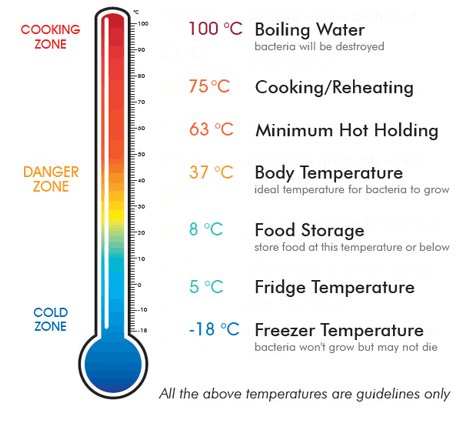
● Influenza. Influenza viruses can immediately affect the lower respiratory tract and cause a deep chest cough. Infection is most often accompanied by severe intoxication, which is manifested by headache, aching throughout the body, and severe weakness. The temperature can reach pyretic (39-41˚C) and hyperpyretic (over 41˚C).
● Respiratory syncytial virus infection. It often affects the trachea and bronchi, in a quarter of the patients it leads to pneumonia. Symptoms are similar to the flu, with the difference that intoxication is less pronounced, signs of inflammation of the lower respiratory tract come to the fore – a deep cough with pain behind the sternum.
● Parainfluenza. The virus infects the nasal cavity, pharynx, larynx. The infection is accompanied by a runny nose, bouts of painful coughing, hoarseness, and sometimes a short-term loss of voice.
● Adenovirus infection. Runs with severe runny nose, sneezing, conjunctivitis.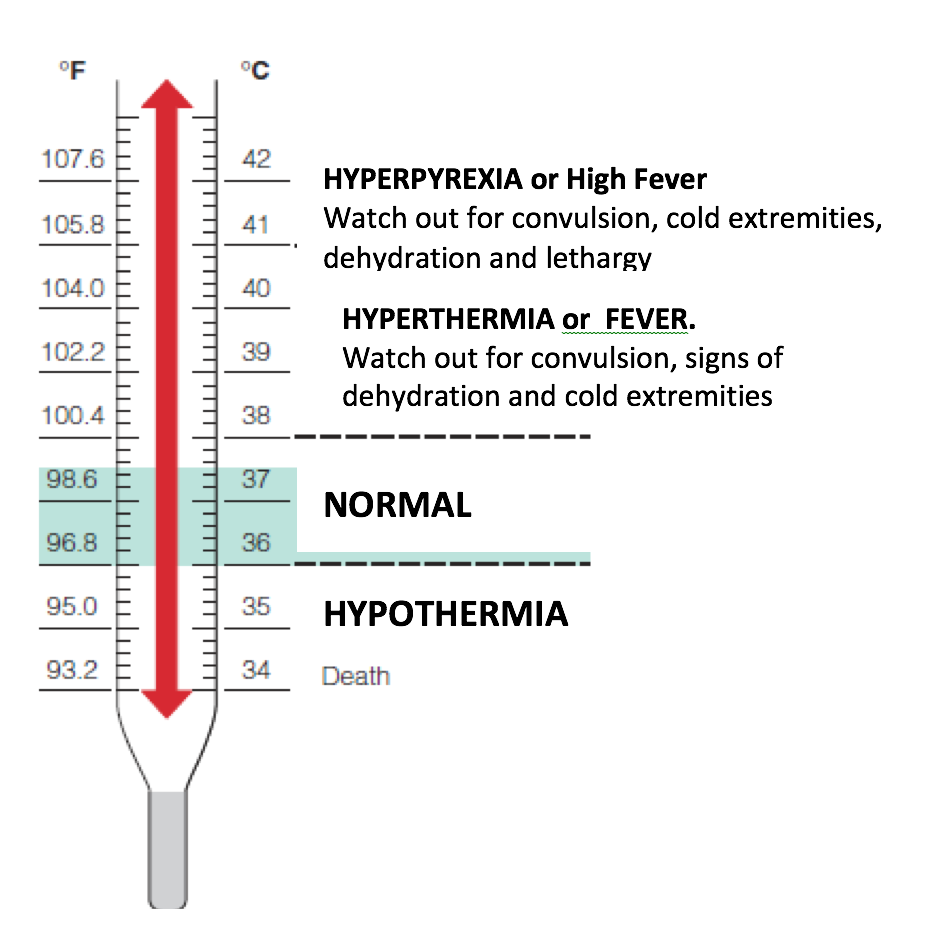 The eyes turn red, watery, there is pain and burning in the area of the eyeballs and eyelids. Unlike other acute respiratory viral infections, adenovirus infection is often infected in spring and summer.
The eyes turn red, watery, there is pain and burning in the area of the eyeballs and eyelids. Unlike other acute respiratory viral infections, adenovirus infection is often infected in spring and summer.
Other causes of fever:
● any infectious disease of a viral, bacterial, parasitic nature;
● non-infectious inflammations: acute pancreatitis, aspiration pneumonitis;
● allergic and autoimmune diseases: reaction to vaccination, rheumatoid arthritis, systemic lupus erythematosus;
● diseases of the thyroid gland, adrenal glands;
● oncological diseases: malignant tumors of internal organs, leukemia, lymphogranulomatosis;
● neurological pathologies: traumatic brain injury, cerebral hemorrhage;
● thermal (solar) stroke;
● psychogenic: prolonged emotional stress, neuroses, hysteria.
When temperature rise is dangerous
Fever poses a threat to health with a strong rise in temperature, when the thermometer shows 40˚C or more. This condition leads to dehydration, disruption of vital organs, and significantly increases the risk of thrombosis.
This condition leads to dehydration, disruption of vital organs, and significantly increases the risk of thrombosis.
For healthy adults, an increase in temperature during SARS by 3˚C from the norm (36.6˚C) is not dangerous. However, for some people, even a febrile temperature can be harmful. At risk:
● Elderly people. After 65 years, it is more difficult for the body to adapt to an increase in temperature due to the age-related decrease in the ability to thermoregulate, the acquisition of chronic diseases.
● People with chronic diseases of internal organs: kidneys, cardiovascular, nervous system. Fever increases the load on these organs and can lead to an exacerbation of the disease.
What to do when the temperature is high
7
Fever helps to defeat the infection faster. With ARVI without fever, the infection takes longer, is accompanied by a pronounced deterioration in well-being, and is more often complicated. Therefore, it is worth suffering malaise for 2-3 days and not bringing down the temperature, provided that the body temperature does not exceed 38. 5˚C. To make it easier to transfer the condition, avoid any physical activity, drink plenty of fluids, do not wrap yourself in blankets and excessively warm clothes that impair heat transfer.
5˚C. To make it easier to transfer the condition, avoid any physical activity, drink plenty of fluids, do not wrap yourself in blankets and excessively warm clothes that impair heat transfer.
But there are times when it is better to bring down the temperature:
● The thermometer reads over 39˚C.
● The rise in temperature is accompanied by a strong deterioration in the condition: loss of strength, poor sleep, nausea, vomiting.
● The patient is at risk.
Fever above 40˚C in adults requires emergency medical attention.
Non-drug methods. Wiping with a damp cloth or a weak vinegar solution will help to reduce the temperature. It is recommended to drink more warm drinks, such as tea with raspberry jam. Raspberries contain natural salicylates – substances that reduce fever. Drink should be moderately warm. Excessively hot or cold drinks and foods should be avoided.
Antipyretics. If non-drug treatments do not help, take an antipyretic medication.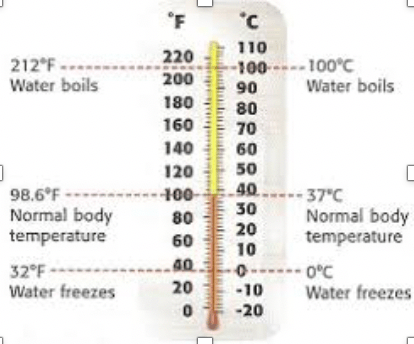 The safest drugs are paracetamol-based, which can be taken even by small children and pregnant women. Paracetamol is included in most combined anti-cold complexes, which additionally relieve nasal congestion and symptoms of intoxication in acute respiratory viral infections.
The safest drugs are paracetamol-based, which can be taken even by small children and pregnant women. Paracetamol is included in most combined anti-cold complexes, which additionally relieve nasal congestion and symptoms of intoxication in acute respiratory viral infections.
Antivirals. Lowering the temperature is not an end in itself in the treatment of SARS. Antiviral therapy should fight the causative agent of the infection. To do this, develop specific antiviral drugs that prevent the reproduction of the virus and infection of healthy cells. In the treatment of colds and flu, enisamium iodide has proven itself well. Its use reduces the acute clinical manifestations of viral intoxication. 8
Enisamia iodide at a dosage of 500 mg is part of the drug Nobasit ® Forte 8 . Nobasit ® Forte begins to act within 2 hours after taking the tablet 8. In addition to the direct antiviral effect, enisamia iodide has a pronounced anti-inflammatory activity 9, 10 . The combined action leads to a 3-fold decrease in the severity of fever and other symptoms of intoxication (headache and muscle pain), starting from the second day of treatment 11 . Also Nobasit ® Forte helps to reduce the duration of the disease. 8
The combined action leads to a 3-fold decrease in the severity of fever and other symptoms of intoxication (headache and muscle pain), starting from the second day of treatment 11 . Also Nobasit ® Forte helps to reduce the duration of the disease. 8
Briefly about the main
● Elevated is defined as a temperature above 37˚C measured in the armpit. If it is caused by an infection, this temperature is called a fever.
● The most common cause of fever in adults is SARS. Other causes – infections, non-infectious inflammation, heat stroke, stress, malignant tumors – are much less common.
● Fever brings recovery closer, but often it greatly affects well-being: it is accompanied by weakness, headache, body aches. In the elderly and people with common chronic diseases, fever often causes dangerous complications.
● Cool down in healthy adults should be above 38.5˚C and in at-risk people above 38˚C.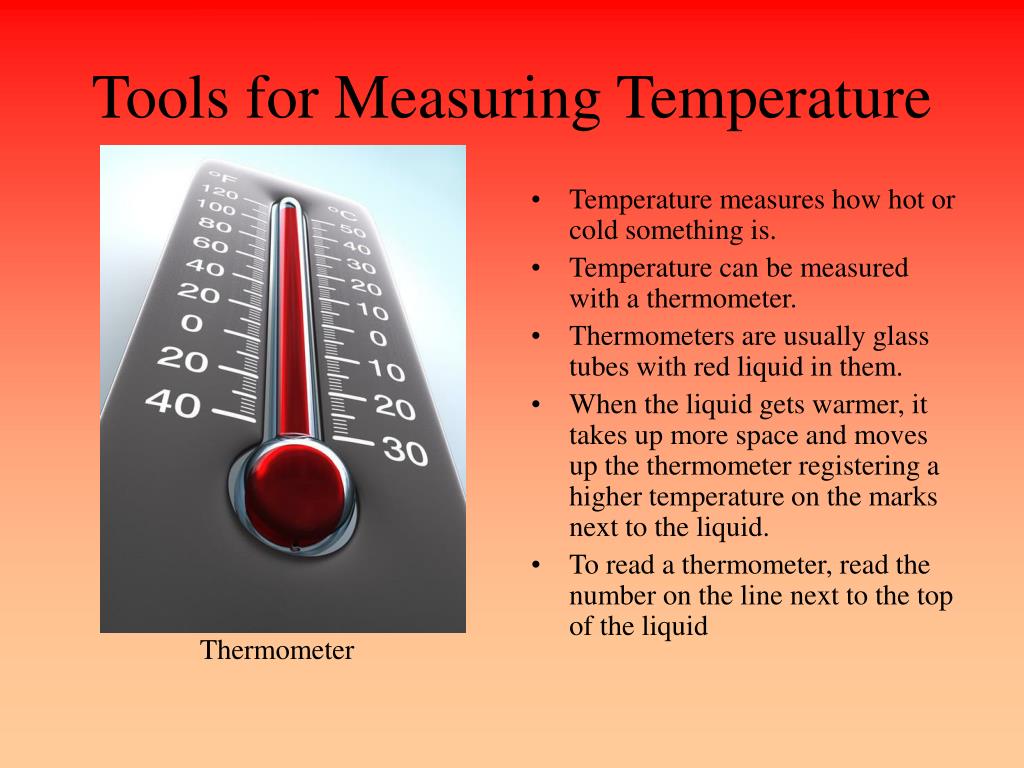 If the temperature rises above 40˚C, it is worth calling an ambulance.
If the temperature rises above 40˚C, it is worth calling an ambulance.
● First, try to bring down the temperature with home remedies – cool body wraps, tea with raspberry jam. If that doesn’t help, take an antipyretic medicine.
● Antipyretics will ease the fever but will not speed up recovery. To defeat the infection as soon as possible, take antiviral drugs, for example, Nobasit ®
Forte.
1 Tatochenko V.K., Uchaikin V.F. Fever // Pediatric pharmacology – 2006 – https://cyberleninka.ru/article/n/lihoradka
2 Fugol D.S. An increase in body temperature in children and approaches to its correction // BC – No. 24, 2013 – https://elibrary.ru/item.asp?id=20603056
3 Vasilenko V.V. Measurement of body temperature // RMJ. – No. 29, 2008, S. 1948. https://www.rmj.ru/articles/istoriya_meditsiny/Izmerenie_temperatury_tela/
4 Dvovetsky L.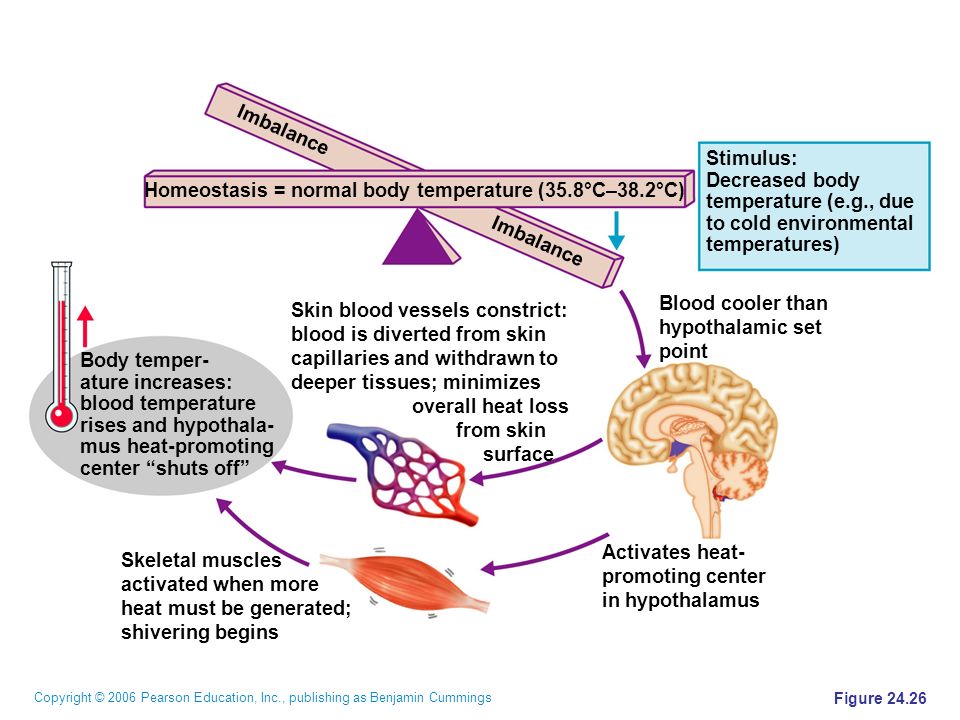 I. Fever: to treat or not to treat // BC – No. 14, 2003 – https://www.rmj.ru/articles/obshchie-stati/Lihoradka_lechity_ili_ne_lechity/
I. Fever: to treat or not to treat // BC – No. 14, 2003 – https://www.rmj.ru/articles/obshchie-stati/Lihoradka_lechity_ili_ne_lechity/
5 Cheshik S.G., Vartanyan R.V. Respiratory syncytial viral infection: clinic, diagnosis, treatment // Children’s infections – No. 1, 2004 – https://cyberleninka.ru/article/n/respiratorno-sintsitialnaya-virusnaya-infektsiya-klinika-diagnosti…
6 Kalyuzhnaya L.I., Zemlyanoy D.A. Heat transfer disorders and fever // Pediatrician – T.6, No. 1, 2015 – https://cyberleninka.ru/article/n/narusheniya-teploobmena-i-lihoradka
7 Didkovsky N.A., Tanasova A.N. Fever. breast cancer. 2003; 4:189.
8 Instructions for medical use of Nobasit® Forte LP-006416.
9 Zyryanov S.K., Butranova O.I., Gaidai D.S., Kryshen K.L., Pharmacotherapy of acute respiratory infections caused by influenza viruses // Therapeutic archive – 2021, (1): pp. 17-27.
10 Kareva E. N., Fedotcheva T.A., Semeikin A.V., Kochina N.A., Krasnoshchok E.V., Shimanovsky N.L. Enisamia iodide – influence on the key components of the inflammatory process in acute respiratory viral infections // Therapeutic archive – 2022; 94 (11): pp. 1233 – 1238
N., Fedotcheva T.A., Semeikin A.V., Kochina N.A., Krasnoshchok E.V., Shimanovsky N.L. Enisamia iodide – influence on the key components of the inflammatory process in acute respiratory viral infections // Therapeutic archive – 2022; 94 (11): pp. 1233 – 1238
11 Lioznov D.A., Karnaukhova E.Yu., Zubkova T.G., Shakhlanskaya E.V., Evaluation of the effectiveness of the ARVI treatment regimen, including etiotropic (enisamia iodide) and symptomatic therapy // Therapeutic archive No. 3 – 2020.
About the product
Download manual
Why is temperature dangerous?
What is the danger of temperature?
Most of all, parents are afraid of fever, that is, an increase in body temperature in children.
We have collected several options for “threats” that scare parents if the temperature on the thermometer rises above “critical levels”:
- Protein will coagulate
- The brain will overheat
- Seizures will start
- The child will “burn out”.

What’s in reality?
An increase in temperature (fever) is a protective mechanism of the human body during the fight against infection. The body is able to control this process and it cannot harm itself.
A safe increase in body temperature is considered a mark of up to 42 degrees. And the protein will not curl. It is impossible to boil an egg at this temperature.
Let’s give an example: almost all housewives have an oven in the kitchen; for cooking a pie, a temperature of 180 degrees is required, for cooking fish or meat – 200-220 degrees. You yourself set this temperature and at the same time the oven will not overheat and will not break.
The same is true of the body: by engaging in the fight against viruses and bacteria, the immune system (hostess) begins to produce pyrogens (oven mode switches). Under their influence, the hypothalamus (oven) raises the temperature from normal to 39-40 degrees.
This is required to increase the efficiency of immune mechanisms, to produce acute phase proteins (C-reactive protein, procalcitonin), which destroy pathogens. Microbes at this temperature will also hardly be able to multiply.
Microbes at this temperature will also hardly be able to multiply.
After the number of bacteria and viruses in the body has decreased, pyrogens cease to be produced and stimulate the hypothalamus, the body temperature returns to normal 36-37 degrees.
Is it necessary to fight “white fever” and give No-shpu?
To increase the temperature, the body activates its forces, reducing heat loss: a spasm of peripheral vessels occurs, the limbs cool, the skin turns pale, trembling and chills are connected.
In the post-Soviet space, it was customary to call this stage of white fever and try in every possible way to turn it into red. This term is absent in international sources, it is believed that this is only one of the mechanisms / stages of temperature increase.
No-shpa is not needed in this case, since its action is directed to the smooth muscles of the internal organs, and not to the vessels.
Febrile convulsions at high temperature.

 Tympanic (in the ear) is OK for kids 6 months and older.
Tympanic (in the ear) is OK for kids 6 months and older.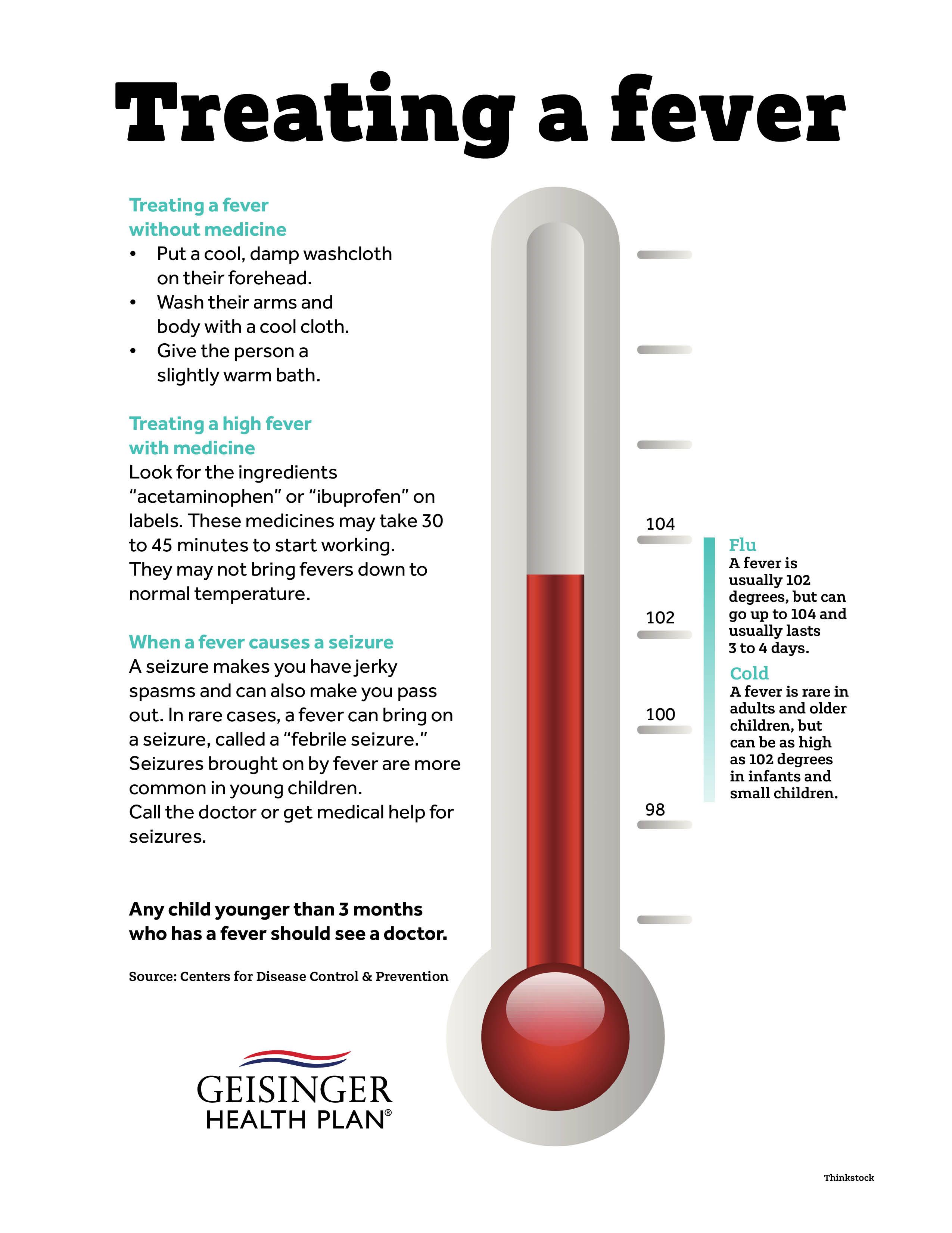 Do not give to children under 6 months old.
Do not give to children under 6 months old.